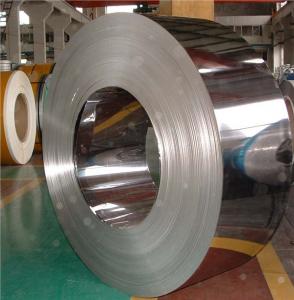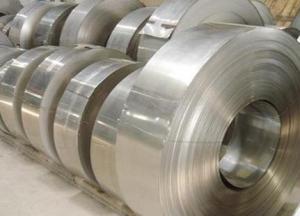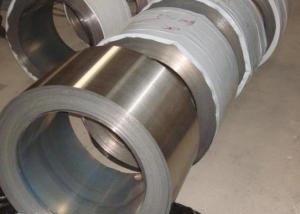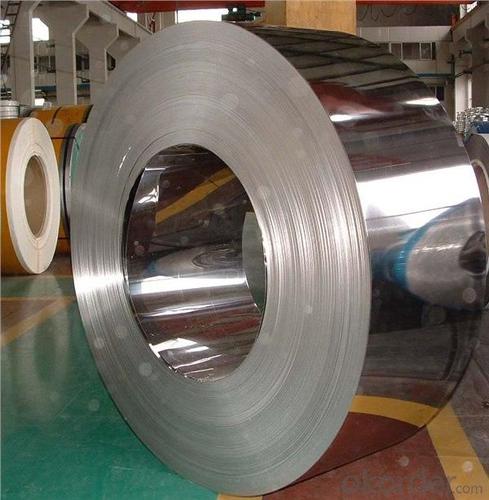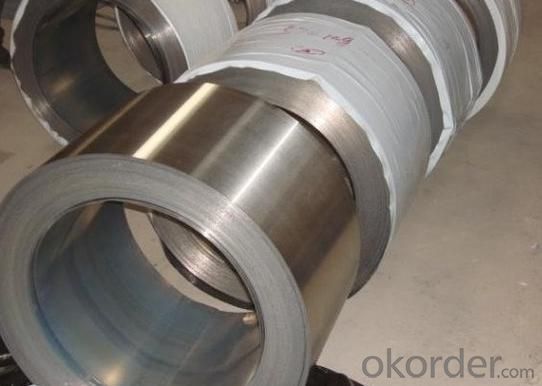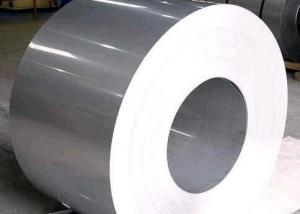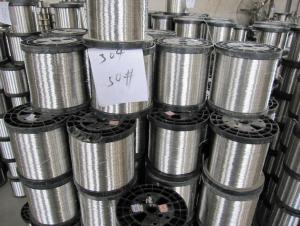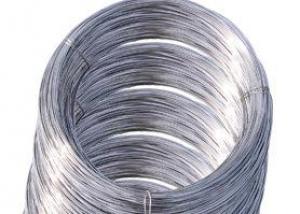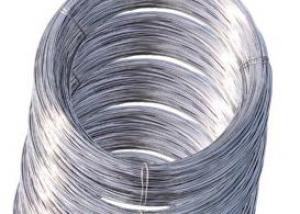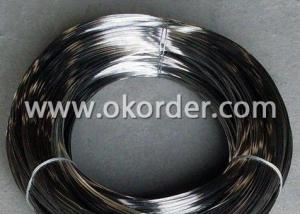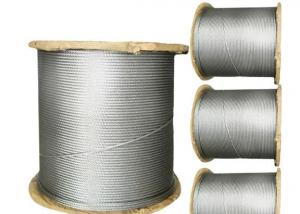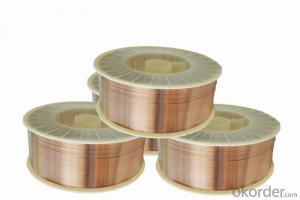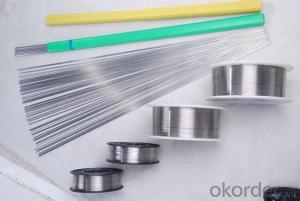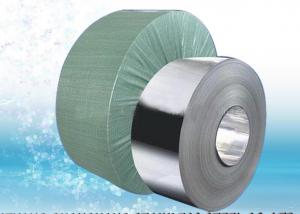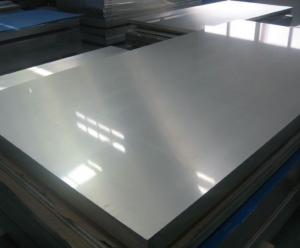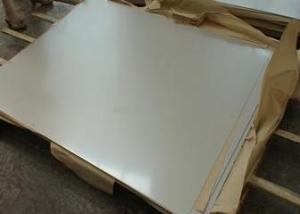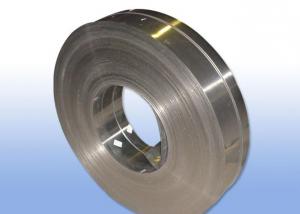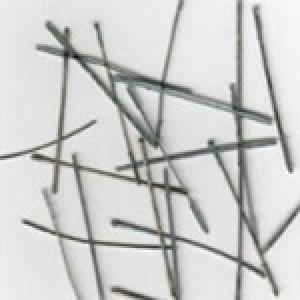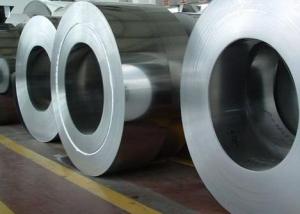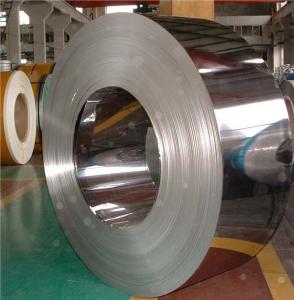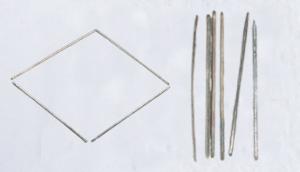AISI 201 Stainless Steel Strips
- Loading Port:
- China Main Port
- Payment Terms:
- TT or LC
- Min Order Qty:
- 1 Ton m.t.
- Supply Capability:
- 2000 Tons Per Month m.t./month
OKorder Service Pledge
OKorder Financial Service
You Might Also Like
AISI 201 Stainless Steel Strips
1. Chemical composition of AISI 201 Stainless Steel Strips
C | Si | Mn | P | S | Ni | Cr |
max0.15 | max1.00 | 5.50-7.50 | max0.06 | max0.03 | max1.00 | 16.00-18.00 |
2. Mechanical properties of AISI 201 Stainless Steel Strips
Yield Strength | Tensile | Elongation | Hardness (HV) | Hardness (HRB) |
245 | 640 | 40 | 253 | 100 |
3. Standard:
AISI, ASTM, GB, EN, DIN, JIS
4. Surface:
2B, NO.1, BA, NO.4, Hairline, SB, Mirror finish, Anti-skid, Cherkered etc.
5. Size:
Thickness: 0.3-3mm (cold rolled), 3-40mm (hot rolled)
Width: 18-600mm
Length: As customers' request.
6. MOQ: 1 Ton
7. Payment terms:T/T or L/C
8. Packing:
Seaworthy package with wooden or Iron pallets with the paper and the steel strip, or as customers' request.
9. Delivery time:
Usually about 7 days after we confirming the order, or according to your quantity.
If you have any question or demand, pls feel free to contact me.
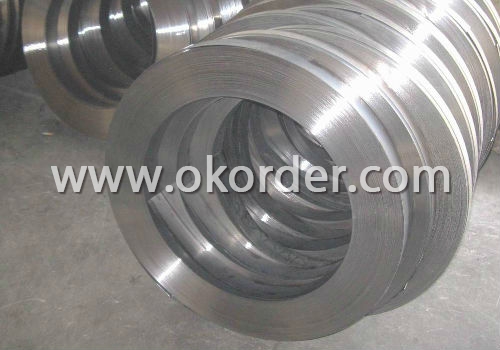

- Q: What are the different types of stainless steel wire rope hooks?
- There is a variety of stainless steel wire rope hooks available, each designed for specific applications and requirements. Some of the commonly used types are as follows: 1. Clevis Hook: This hook has a clevis pin that can be easily attached or detached from the wire rope, providing a secure connection. It is commonly utilized in lifting and hoisting operations. 2. Eye Hook: This hook has a closed loop or eye at the end, allowing for easy attachment of the wire rope. It is frequently used when the hook needs to be permanently connected to the rope. 3. S-Hook: The S-hook, named after its shape resembling the letter "S," has a curved end used for attaching the hook to the wire rope. It is commonly employed in lighter-duty applications such as hanging signs or securing objects. 4. Carabiner Hook: Shaped like a carabiner, this hook is typically used for climbing or rigging purposes. It includes a spring-loaded gate that facilitates quick attachment or detachment of the wire rope. 5. Snap Hook: Similar to carabiner hooks, snap hooks have a wider, flat shape with a spring-loaded gate. They are commonly used in industries like marine or construction, where quick attachment and detachment are necessary. 6. Swivel Hook: The swivel hook features a rotating mechanism that allows the hook to rotate freely, preventing twisting or kinking of the wire rope. It is frequently used in lifting operations where the load may rotate or spin. To ensure safe and efficient operations, it is vital to select the appropriate type of stainless steel wire rope hook based on the specific application, load capacity, and environmental conditions.
- Q: Is it necessary to make barbecue with argon arc welding wire (stainless steel)?
- Use argon arc welding wire (stainless steel) as barbecue rack, roasting meat is not harmful to human body.
- Q: What are the different types of stainless steel wire gauges?
- There are several different types of stainless steel wire gauges commonly used in various industries. The most commonly used stainless steel wire gauge system is the American Wire Gauge (AWG) system. It is primarily used in North America and is based on a standardized set of sizes for stainless steel wires. The AWG system ranges from 0000 (4/0) to 40, with 0000 being the thickest gauge and 40 being the thinnest gauge. Each gauge represents a specific diameter of stainless steel wire. For example, a 4/0 gauge wire has a diameter of 0.460 inches, while a 40 gauge wire has a diameter of 0.003 inches. Another commonly used stainless steel wire gauge system is the British Standard Wire Gauge (SWG) system. It is primarily used in the United Kingdom and is based on a similar set of standardized sizes for stainless steel wires. However, the SWG system uses a different numbering system compared to the AWG system. The SWG system ranges from 7/0 to 50, with 7/0 being the thickest gauge and 50 being the thinnest gauge. Apart from these two main gauge systems, there are other international gauge systems used in different regions around the world. These include the Japanese Industrial Standards (JIS) gauge system and the International Standard Organization (ISO) gauge system. Ultimately, the choice of stainless steel wire gauge depends on the specific requirements of the application. Thicker gauges are generally used for heavy-duty applications that require high strength and durability, while thinner gauges are used for applications that require flexibility and fine wire mesh.
- Q: TIG welding of stainless steel weld why blue
- Argon arc welding is a welding technique using argon as protective gas when welding stainless steel. Also called argon gas shielded welding. That is, argon shielded gas is applied around the arc welding, and the air is separated from the welding zone to prevent the oxidation of the welding zone.
- Q: Can stainless steel wire be used for wire mesh filters?
- Yes, stainless steel wire can be used for wire mesh filters. Stainless steel is highly durable, corrosion-resistant, and can withstand high temperatures, making it an excellent choice for filtering applications. It provides efficient filtration while maintaining structural integrity and longevity.
- Q: What are the different types of stainless steel wire weaving patterns?
- There are several different types of stainless steel wire weaving patterns that are commonly used in various industries and applications. Some of the most popular patterns include: 1. Plain Weave: This is the simplest and most common type of weave pattern. It consists of a simple over-and-under interlocking of wires, resulting in a uniform appearance. Plain weave is versatile and can be used for a wide range of applications. 2. Twill Weave: Twill weave patterns have a diagonal appearance due to the staggered interlocking of wires. This pattern offers increased strength and stability compared to plain weave. Twill weave is often used in applications that require high tensile strength and durability. 3. Dutch Weave: Dutch weave patterns have a tighter and more closely spaced weave compared to plain or twill weaves. It is created by using a thicker warp wire and a thinner weft wire. Dutch weave is ideal for applications where fine filtration and high mechanical strength are required. 4. Five-Heddle Weave: This pattern is specifically designed to provide a high level of filtration efficiency. It consists of four warp wires and one weft wire, resulting in a dense and tight weave. Five-heddle weave is commonly used in industries such as oil and gas, petrochemical, and pharmaceuticals. 5. Reverse Dutch Weave: Reverse Dutch weave is similar to Dutch weave, but with reversed wire positions. This pattern has a finer mesh count and higher stability, making it suitable for applications that require excellent filtration and high flow rates. 6. Welded Wire Mesh: In this pattern, the wires are spot welded at their intersections, creating a strong and rigid mesh. Welded wire mesh is commonly used in construction, fencing, and industrial applications where strength and security are essential. These are just a few examples of the different types of stainless steel wire weaving patterns available. Each pattern has its own unique characteristics and is chosen based on the specific requirements of the application, such as strength, filtration, or aesthetics.
- Q: Can stainless steel wire be used in electrical applications?
- Yes, stainless steel wire can be used in electrical applications. It is commonly used in situations where corrosion resistance and durability are required, such as in electrical wiring, heating elements, and conductive applications.
- Q: Set the rabbit with stainless steel, hard silk or soft silk?
- It is soft silk, the soft steel wire is the soft silk that you call.
- Q: What are the different types of stainless steel wire surface finishes?
- There are several different types of stainless steel wire surface finishes, each offering unique characteristics and benefits. Some of the most commonly used finishes include: 1. Bright Annealed (BA) Finish: This finish is achieved by annealing the stainless steel wire in a controlled atmosphere, resulting in a highly reflective and smooth surface. It is commonly used in decorative applications where a shiny and aesthetically pleasing appearance is desired. 2. No. 1 Finish: Also known as a hot-rolled annealed and pickled (HRAP) finish, this surface finish is achieved by subjecting the wire to hot rolling, followed by annealing and pickling. It has a dull, rough appearance and is often used in industrial applications where aesthetics are not a primary concern. 3. No. 2B Finish: This finish is obtained by cold rolling the wire, followed by annealing and descaling. It has a smooth, moderately reflective surface and is commonly used in applications where a smooth and even appearance is desired, such as kitchen appliances and architectural components. 4. No. 4 Finish: This finish is achieved by polishing the wire with progressively finer abrasives until a uniform and smooth surface is obtained. It has a brushed appearance and is commonly used in applications where both aesthetics and functionality are important, such as elevator doors and decorative elements. 5. No. 8 Mirror Finish: Also known as a mirror or reflective finish, this surface finish is achieved by further polishing the wire to a highly reflective and mirror-like surface. It is often used in decorative applications where a high-end and luxurious appearance is desired. 6. Electro-Polished (EP) Finish: This finish involves subjecting the wire to an electrochemical process that removes surface imperfections and enhances corrosion resistance. It creates a smooth and bright surface finish and is commonly used in applications where hygiene and cleanliness are crucial, such as pharmaceutical and food processing industries. It is important to note that the selection of the appropriate surface finish depends on various factors, including the intended application, desired appearance, and specific requirements of the wire.
- Q: Is stainless steel wire resistant to alkaline environments?
- Yes, stainless steel wire is generally resistant to alkaline environments.
1. Manufacturer Overview
| Location | Shandong,China |
| Year Established | 2005 |
| Annual Output Value | Above US$5.3 Million |
| Main Markets | Europe, China |
| Company Certifications | ISO9001:2000 |
2. Manufacturer Certificates
| a) Certification Name | |
| Range | |
| Reference | |
| Validity Period |
3. Manufacturer Capability
| a) Trade Capacity | |
| Nearest Port | Tian Jin |
| Export Percentage | 30% |
| No.of Employees in Trade Department | 40 People |
| Language Spoken: | English;Chinese |
| b) Factory Information | |
| Factory Size: | Above 50,000 square meters |
| No. of Production Lines | Above 8 |
| Contract Manufacturing | OEM Service Offered;Design Service Offered |
| Product Price Range | Average |
Send your message to us
AISI 201 Stainless Steel Strips
- Loading Port:
- China Main Port
- Payment Terms:
- TT or LC
- Min Order Qty:
- 1 Ton m.t.
- Supply Capability:
- 2000 Tons Per Month m.t./month
OKorder Service Pledge
OKorder Financial Service
Similar products
Hot products
Hot Searches
Related keywords
